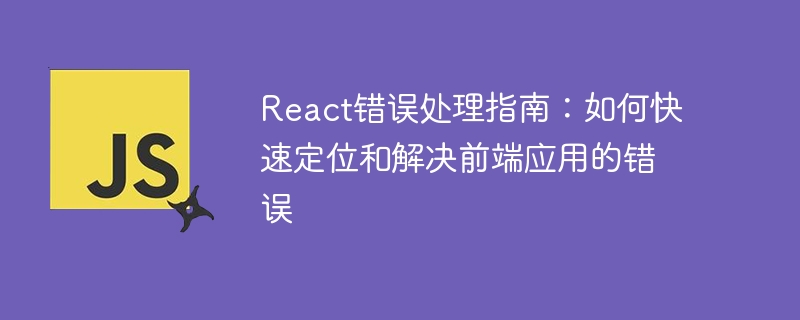

React Error Handling Guide: How to quickly locate and solve front-end application errors
Introduction: React is a popular JavaScript library that is widely used to develop user interfaces . However, various errors inevitably occur during the development process. This article will introduce you to some React error handling techniques and methods to help developers quickly locate and solve errors in front-end applications.
1. Error Boundaries
componentDidCatchlife cycle method. For example:class ErrorBoundary extends React.Component { constructor(props) { super(props); this.state = { hasError: false }; } componentDidCatch(error, info) { console.log(error); console.log(info.componentStack); this.setState({ hasError: true }); } render() { if (this.state.hasError) { return 发生了错误!; } return this.props.children; } }
When used, wrap the component that needs to capture errors:
setTimeout,Promise, etc. Errors need to be caught and handled manually in asynchronous code.2. Errors that cannot be captured by error boundaries
setTimeoutorfetchWhen other methods perform asynchronous operations, error boundaries cannot capture errors directly. You need to use thetry-catchstatement in asynchronous operations to manually catch and handle errors.async fetchData() { try { const response = await fetch('api/data'); const data = await response.json(); // 处理数据 } catch (error) { console.log(error); // 错误处理 } }
try-catchto manually catch errors, or add appropriate error handling mechanisms in the relevant code blocks.handleClick() { try { // 处理点击事件 } catch (error) { console.log(error); // 错误处理 } }
3. Error logging
4. Use debugging tools
Conclusion:
This article introduces some tips and methods of React error handling, including the use of error boundaries, asynchronous code error handling, event handling function error handling, error logging and debugging tools Use etc. It is hoped that through these methods, developers can more efficiently locate and solve errors in front-end applications and improve user experience and development efficiency.
The above is the detailed content of React Error Handling Guide: How to quickly locate and resolve front-end application errors. For more information, please follow other related articles on the PHP Chinese website!




